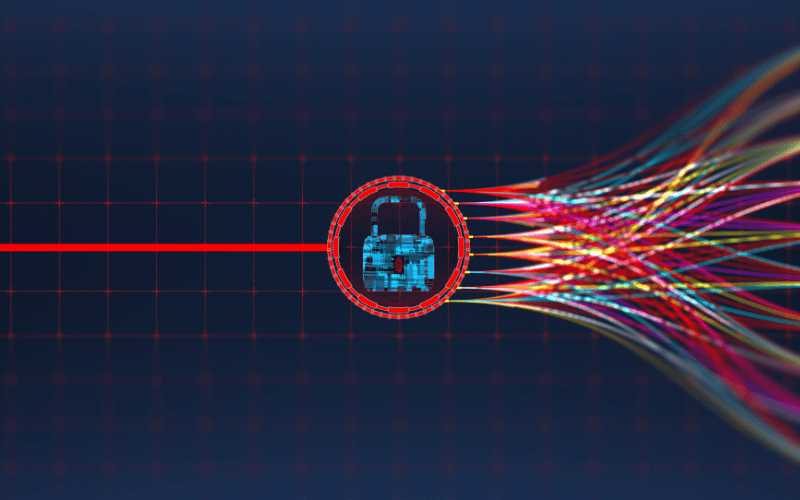What is Zero Trust Data Access?
What is zero trust data access (ZTDA)?
Zero Trust Data Access (ZTDA) is a security approach that assumes that all network access requests, including those from inside the network, are untrusted and potentially dangerous. It is based on the principle that organizations should not automatically trust anyone, including employees, partners, or customers, and should verify their identity and device before granting access to sensitive data and applications.
This approach aims to protect organizations against cyber threats by reducing the attack surface and eliminating trust-based access. Instead of relying on traditional perimeter security, ZTDA employs multiple layers of security controls and monitoring to ensure that only authorized individuals have access to sensitive data and applications.
ZTDA involves implementing strong authentication and authorization controls, regularly monitoring network activity, and implementing data encryption and privacy technologies. This helps to prevent unauthorized access to sensitive data, reduce the risk of data breaches, and improve overall security posture.
This security approach is a proactive and comprehensive approach to security that helps organizations protect sensitive data and assets from cyber threats.
How does ZTDA differ from ZTNA?
Zero Trust Data Access (ZTDA) and Zero Trust Network Access (ZTNA) are related concepts in cybersecurity, but they differ in their scope and focus.
Zero Trust Network Access (ZTNA) refers to the concept of verifying and controlling access to networks, systems, and applications based on the principle of "never trust, always verify." ZTNA assumes that all network access requests, whether from inside or outside the network, are potentially dangerous and should be verified and authenticated before granting access.
Zero Trust Data Access (ZTDA), on the other hand, focuses specifically on access to data, regardless of where it is stored or how it is accessed. ZTDA assumes that all data access requests are untrusted and should be verified and authenticated before granting access to sensitive data. This includes access to data stored on-premises, in the cloud, or in hybrid environments.
How does zero trust data access fit into zero trust security?
Zero Trust Data Access (ZTDA) is a critical component of the larger Zero Trust security framework. Zero Trust security is a security approach that assumes that all access requests, regardless of origin, are untrusted and should be verified before granting access. ZTDA fits into the Zero Trust security framework by addressing the protection of sensitive data within the organization.
In the Zero Trust security framework, ZTDA is used in combination with other security controls, such as multi-factor authentication, encryption, and network segmentation, to create a comprehensive security solution. ZTDA ensures that only authorized individuals have access to sensitive data, regardless of where it is stored or how it is accessed. This helps to reduce the risk of data breaches and improve overall security posture.
ZTDA also helps organizations to meet data privacy regulations, such as the General Data Protection Regulation (GDPR) and the California Consumer Privacy Act (CCPA), by ensuring that sensitive data is protected and accessed only by authorized individuals.
What is ZTDA micro-segmentation?
Ans: Zero Trust Data Access (ZTDA) micro-segmentation refers to the practice of segmenting and securing access to sensitive data at a granular level. In a ZTDA environment, micro-segmentation is used to enforce least-privilege access controls and restrict access to sensitive data to only those individuals who need it to perform their job functions.
Micro-segmentation is accomplished by creating logical security zones within the network that isolate sensitive data from other parts of the network. Each security zone is then protected by its own set of security controls, such as firewalls, intrusion prevention systems (IPS), and access controls. This helps to prevent unauthorized access to sensitive data and reduces the risk of data breaches.
What are some zero trust data access blind spots?
ZTDA can have blind spots that can leave sensitive data vulnerable to attack. Some common ZTDA blind spots include:
- Insufficient visibility: ZTDA relies on being able to see all access requests and monitor all access to sensitive data. If there are gaps in visibility, it can be difficult to detect unauthorized access to sensitive data.
- Complexity: ZTDA can be complex to implement, especially in large organizations with many systems and users. This can lead to misconfigurations or oversights that leave sensitive data vulnerable to attack.
- Lack of enforcement: ZTDA relies on enforcing least-privilege access controls, but if these controls are not properly enforced, unauthorized users may be able to access sensitive data.
- Incomplete coverage: ZTDA may not cover all sensitive data, especially if the data is stored in legacy systems or in cloud environments. This can leave sensitive data vulnerable to attack.
- Lack of user education: ZTDA relies on users to follow proper access controls and procedures, but if users are not properly educated on the importance of data security, they may inadvertently put sensitive data at risk.








